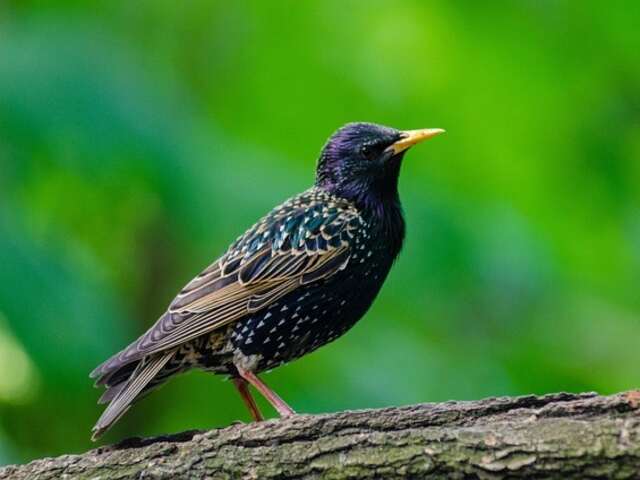
Are you tired of constantly cleaning up bird droppings from your balcony? Look no further! In this article, we will share tips and tricks on “How To Keep Birds Off Balcony?”.
From various bird deterrent products to humane control methods, we have got you covered. So, if you’re ready to enjoy your balcony without the pesky birds, keep reading!
Table of Contents
- 1 Overview: Balcony Bird Control
- 2 Problematic Birds: Identifying the Culprits
- 3 Effective Bird Deterrents for Balconies
- 4 Visual deterrents
- 5 Audio Deterrents
- 6 Natural methods to keep birds away
- 7 Plants that repel birds
- 8 Scare tactics using everyday objects
- 9 Proper cleanup and maintenance of bird infestations
- 10 Maintaining Cleanliness: An Essential Step in Bird Control
- 11 Nest Removal: A Crucial Measure for Effective Bird Control
- 12 Secure Potential Entry Points to Prevent Access
- 13 Conclusion
- 14 Frequently Asked Questions
- 14.1 What types of birds are the most common problem on balconies?
- 14.2 Do bird deterrent products harm birds in any way?
- 14.3 Can using visual and audio deterrents be effective in the long term?
- 14.4 What are some natural methods to keep birds away that won’t harm the environment?
- 14.5 How can I tell if there is a bird infestation on my balcony?
- 15 Conclusion
- 16 Author
Overview: Balcony Bird Control
If you’re looking to create a more serene and peaceful outdoor space, you may want to consider implementing some measures to deter feathered visitors from frequenting your balcony.
Balcony bird control is a common concern for many homeowners, as birds can leave droppings and feathers that can be unsightly and potentially hazardous.
However, before considering bird deterrents, it’s important to understand bird behavior and which types of birds are causing problems in your area.
Bird behavior varies depending on the species, but most birds are attracted to balconies because they provide a safe and elevated perch for them to rest and observe their surroundings.
Additionally, birds are often drawn to balconies with bird feeders or water sources.
To deter birds from your balcony, it’s important to remove any potential food or water sources and make the area less desirable for them to perch on.
There are many bird deterrents available on the market, including visual and audio deterrents, physical barriers, and scent-based deterrents.
Some popular options include bird spikes, reflective tape, and predator decoys. However, it’s important to note that not all bird deterrents work for every situation and bird species.
In the next section, we will discuss the types of birds that commonly cause problems on balconies and which bird deterrents are most effective for each species.
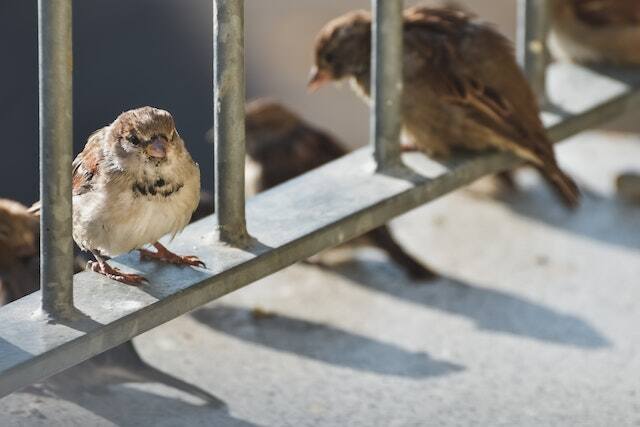
Problematic Birds: Identifying the Culprits
If you’re dealing with pigeons on your balcony, you’re probably used to their cooing and droppings by now. These birds are attracted to food scraps and often nest in the same spot year after year.
To keep them away, try using bird spikes or netting around your balcony railing.
Grackles can be quite the nuisance as well, especially during nesting season. They’re known for their loud, obnoxious calls and tendency to pick at outdoor dining areas.
To deter these birds, try using reflective tape or hang up shiny objects around your balcony.
Starlings and sparrows are also common balcony invaders, known for their messy droppings and tendency to nest in small, hard-to-reach spaces.
To keep them away, try using a motion-activated sprinkler system or a decoy bird of prey to scare them off.
Pigeons
You’ll want to avoid those pesky pigeons from invading your balcony and leaving their mess behind. Pigeons are notorious for being one of the most common birds to cause problems on balconies.
They can be found in urban areas and are attracted to buildings with ledges and open spaces. Fortunately, there are several ways to keep pigeons away from your balcony.
One effective method for balcony bird control is to install bird spikes. These spikes are harmless to birds but make it difficult for them to land on your balcony.
Another option is to use visual deterrents such as owl decoys or reflective tape. These items can scare off pigeons and prevent them from landing on your balcony.
By taking these steps, you can keep your balcony pigeon-free and enjoy a clean outdoor space.
As for grackles, these birds are known for their loud calls and aggressive behavior. They are also attracted to balconies and can cause damage to plants and furniture.
To prevent grackles from invading your balcony, there are several solutions you can try. Stay tuned for the next section to learn more.
Grackles
Did you know that grackles are one of the most common birds to cause problems on balconies, with their large flocks and aggressive behavior?
They are attracted to food scraps, so it’s important to keep your balcony clean and free of any food debris.
One way to deter grackles from landing on your balcony is by using balcony netting. This is a physical barrier that prevents birds from landing and roosting on your balcony.
It’s a great option if you don’t want to harm the birds or disrupt the natural environment.
Another option is bird spikes. These are small, plastic or metal spikes that are placed on the edges of balconies to prevent birds from landing.
They work by making it uncomfortable for birds to land and roost on your balcony. However, some people find them unattractive, and they can be harmful to birds if not installed properly.
If you prefer a natural bird repellent for balcony, try planting herbs such as lavender or rosemary. Grackles dislike the strong scent of these herbs and will avoid them.
Now that you know how to keep grackles away, let’s move on to the next bird that may be causing problems on your balcony – starlings.
Starlings
You might be surprised to learn that starlings can also cause problems on your balcony, but don’t worry, we’ve got some tips to help you coexist peacefully with these birds.
Starlings are known for their noisy chatter and tendency to nest in groups, which can create quite a mess on your balcony. Here are some tips to keep these birds at bay:
- Install balcony netting: This is a great option if you want to keep starlings and other birds from entering your balcony altogether. Balcony netting is easy to install and can be found at most hardware stores.
- Try bird spikes: Bird spikes are another effective way to keep starlings and other birds from landing on your balcony railing or other surfaces. This humane bird control method is safe for the birds and will not harm them.
- Use humane bird control methods: If you don’t want to use balcony netting or bird spikes, there are other humane bird control methods you can try. For example, you can use a motion-activated sprinkler system to scare away starlings and other birds.
Now that you know how to keep starlings off your balcony, let’s move on to the next section to learn about sparrow control.
Sparrows
If you’re struggling with sparrow control, there are some humane methods you can try to peacefully coexist with these birds.
For example, a friend of mine used reflective tape to deter sparrows from building nests in the corners of their balcony. The tape reflected light and created a visual disturbance that disrupted the birds’ nesting behavior.
Another option is balcony netting, which can be installed to keep sparrows from roosting and nesting on your balcony. This is a good solution for those who want to keep sparrows away while still allowing other birds to visit.
In addition to balcony netting, there are bird deterrent products for balconies that can be effective against sparrows.
Bird spikes are a popular option that can be installed on railings and ledges to prevent birds from perching. There are also visual bird deterrents for balconies, such as hanging reflective objects or using fake predators like owls or snakes.
However, it’s important to note that these methods may not work for all situations and may require some trial and error to find the right solution for your specific balcony.
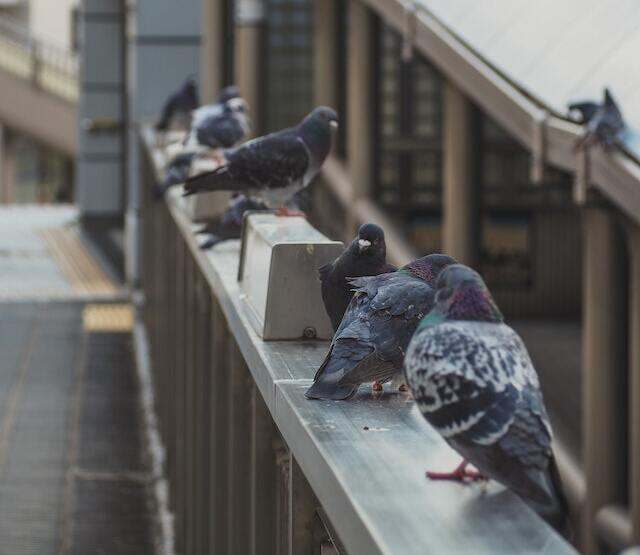
Effective Bird Deterrents for Balconies
Looking for effective products to discourage feathered visitors from perching on your outdoor living space? Check out these balcony bird deterrent options.
- Balcony Bird Control: This product is a humane way to keep birds at bay. The device emits ultrasonic waves that are inaudible to humans but extremely uncomfortable for birds. It’s easy to install and can be used in any outdoor space.
- Bird Barrier Netting: This is a more physical approach to bird control. The netting can be installed around the perimeter of your balcony to prevent birds from entering the area. It’s a great option for those who want to enjoy their balcony without worrying about bird droppings or noise.
- Bird Spikes: These are small spikes that can be installed on the edges of your balcony to prevent birds from landing. They’re a cost-effective and easy-to-install option for those who want to keep birds off their balcony. They’re also visually unobtrusive, so they won’t detract from the aesthetics of your outdoor space.
If you’re looking for an effective way to keep birds off your balcony, these bird deterrent products are a great place to start.
By using a combination of these products, you can create a bird-free zone that will allow you to enjoy your outdoor space without any unwanted feathered visitors.
In the next section, we’ll explore visual deterrent options that can help keep birds away from your balcony.
Visual deterrents
Reflective tape is an effective visual deterrent for birds. You can attach it to your balcony railing or any other surface that birds tend to perch on.
Decoys like fake owls or snakes can also be used to scare birds away from your balcony.
Lastly, bird spikes can be installed on the edges of your balcony to prevent birds from landing on them.
Reflective tape
You can use some shiny tape to deter those pesky feathered friends from visiting your outdoor space. Reflective tape, also known as bird tape, is an effective visual deterrent that can help keep birds away from your balcony.
The tape reflects light, creating an illusion of movement and scaring away birds because they’re easily startled by sudden movements.
To use reflective tape as a bird deterrent, follow these steps:
- Cut the tape into strips of varying lengths.
- Attach the strips to the edges of your balcony using adhesive tape or string.
- Make sure the tape is visible from all angles to maximize its effectiveness.
- Replace the tape every few weeks as it can lose its reflectivity over time.
While reflective tape is a simple and affordable solution to keep birds off your balcony, it may not work for all types of birds or bird behavior.
In some cases, you may need to combine this method with other deterrents, such as balcony netting or decoys, to achieve the desired result.
Decoys
If you’re tired of feathered visitors making themselves at home on your balcony, adding some decoys might just do the trick. Decoys can be an effective and humane bird repellent, as they mimic predators and scare birds away.
There are several types of decoys you can use, including scarecrow decoys, which are life-sized figures that resemble birds of prey. You can also use decoys that resemble other animals, such as snakes or cats, to scare away birds.
To help you choose the right decoy, consider the type of bird you’re trying to keep away. Some birds, such as pigeons and seagulls, are more attracted to certain decoys than others.
For example, pigeons are often scared away by owl decoys, while seagulls may be deterred by hawk or eagle decoys. Use this table as a reference for which decoys work best for different types of birds:
| Bird Type | Decoy Predator |
|---|---|
| Pigeons | Owl |
| Seagulls | Hawk or Eagle |
| Sparrows | Snake or Cat |
While decoys can be effective, it’s important to move them around often to prevent birds from getting used to them.
Additionally, if you’re using scarecrow decoys, make sure they’re placed in an area where they won’t be knocked over by wind or other elements.
Decoys can be a great addition to your balcony bird control strategy, but they work best when used in conjunction with other methods, such as bird spikes.
Bird Spikes
Looking for a way to deter unwanted feathered visitors from perching on your balcony? Try installing bird spikes, a humane and effective method that has been used for years.
Bird spikes are made of plastic or stainless steel and come in strips that can be easily installed on ledges, railings, and other surfaces.
They work by creating an uneven surface that birds cannot comfortably land on, forcing them to find another place to perch.
Another option for physical barriers is bird barrier netting. This is a type of mesh netting that can be installed around the perimeter of your balcony, creating a barrier that birds cannot fly through.
Although it may not be as aesthetically pleasing as bird spikes, it can be effective in keeping birds away.
However, it is important to ensure that the netting is properly installed and taut to prevent birds from getting caught in it.
In the next section, we’ll explore another type of deterrent: audio deterrents.

Audio Deterrents
If you’re looking for a way to keep birds off your balcony, ultrasonic repellers and sonic devices are great options. The devices generate high-pitched noises that repel birds but are inaudible to human ears.
Sonic devices produce sounds that mimic predator calls or distress signals, which scares birds away.
Ultrasonic and sonic devices are easy to install and low-maintenance, making them an excellent choice for bird control on your balcony.
Ultrasonic repellers
Ultrasonic repellers emit sound waves that deter flying creatures from landing on your outdoor space. Bird control devices utilize high-frequency sounds that are imperceptible to humans but annoying to birds.
Ultrasonic bird deterrents produce a sound that mimics a predator’s call or a distress signal, making birds feel threatened and uncomfortable.
Here are two nested bullet point lists to help you understand the benefits and drawbacks of ultrasonic bird repellers:
Benefits:
- Ultrasonic repellers are safe and humane, as they don’t harm birds in any way.
- They’re easy to install and maintain, requiring minimal effort and time.
Drawbacks:
- Ultrasonic bird deterrents may not be effective on all bird species, as some birds aren’t bothered by high-frequency sounds.
- They may be expensive compared to other bird control methods, and they require a power source to function properly.
Now that you know the pros and cons of ultrasonic bird repellers, let’s move on to the next section about sonic devices.
These devices emit audible sounds that are unpleasant to birds, and they can be a great alternative for those who’re looking for a more affordable option.
Sonic devices
Sonic devices create sounds that startle and deter avian visitors from your outdoor area. Unlike ultrasonic bird deterrents, which emit high-frequency sounds that may not be audible to humans, sound deterrents produce noise that is easily heard by birds and people alike.
These devices come in various forms, ranging from hand-held units to stationary models that can be mounted on the wall or ceiling.
Motion-activated deterrents are especially effective because they only activate when birds are present, conserving battery life and reducing noise pollution.
Some models emit a variety of sounds, from predator calls to distress signals, to keep birds guessing and prevent them from becoming accustomed to one specific noise.
Sonic devices can be a valuable tool in your bird control arsenal, but it’s important to note that they may not be effective in all situations.
In the next section, we’ll explore some natural methods to keep birds away.
Natural methods to keep birds away
You can try using natural methods to keep birds away. Hanging up CDs or mirrors can be an effective way to deter them, since birds are naturally wary of reflective surfaces and objects.
Using natural bird repellents like peppermint or citronella oils is another option, as these scents are unpleasant to birds and can keep them away from your balcony.
Installing physical barriers such as netting or wire mesh can also prevent birds from landing or nesting, but keep in mind that this may not be the most aesthetically pleasing option.
You can also install spikes or other deterrents on ledges or railings to prevent birds from perching.
Plants that repel birds can be a natural solution as well. Certain herbs like lavender, thyme, and rosemary are known to have scents that deter birds.
Additionally, planting prickly bushes like holly or juniper can discourage birds from landing on your balcony.
Incorporating these natural methods can be a humane way to keep birds off your balcony without causing harm to them.
Plants that repel birds
If you’re looking for a plant that repels birds, consider sunflowers. These tall plants are not only beautiful but also effective at keeping birds away.
Marigolds are another option, as they have a strong scent that birds find unpleasant.
And if you want a plant that serves multiple purposes, try mint. Its strong aroma is unappealing to birds, and it can also be used in cooking or as a natural insect repellent.
Sunflowers
Planting sunflowers on your balcony will add a burst of color and provide a beautiful backdrop for you to enjoy the outdoors.
But did you know that sunflowers can also help keep birds away? These tall, bright flowers are a natural bird repellent and can be a great addition to your balcony bird control plan.
Sunflowers have a strong smell that many birds find unpleasant. This makes them an effective bird proofing method that won’t harm the birds or damage your balcony.
Plus, sunflowers are easy to grow and require minimal maintenance, making them a convenient natural bird repellent option. For even more bird control, consider planting marigolds alongside your sunflowers.
Marigolds
Adding marigolds to your balcony not only enhances the beauty of your outdoor space, but also acts as a natural bird repellent alongside your sunflowers.
Marigolds emit a strong scent that birds dislike, making it harder for them to perch or nest on your balcony.
You can also use marigolds in combination with other bird-proofing methods like balcony netting or sound deterrents to keep your balcony bird-free.
In addition to their bird-repelling properties, marigolds are easy to care for and come in a variety of colors, making them a versatile addition to your balcony garden.
They require minimal watering and are relatively low-maintenance, making them a great option for busy balcony gardeners. Next, let’s explore how mint can also help keep birds off your balcony.
Mint
Mint adds a fresh and fragrant touch to your balcony, while also naturally repelling pesky feathered visitors. Planting mint in your balcony garden will not only keep birds away, but will also add an aesthetic appeal to your outdoor space.
The scent of mint is too strong for birds to handle, and they will avoid the area altogether.
Along with marigolds, mint can be an effective bird repellent that is both natural and safe for other animals and humans.
If you want a more foolproof method of keeping birds off your balcony, consider investing in balcony netting or bird proofing.
While these options may be more expensive, they are highly effective and can provide long-term solutions.
You can also use bird repellent gel, which can be applied to areas where birds perch or nest. This gel is sticky and uncomfortable for birds, making them unlikely to return to the area.
However, before using these options, make sure to research and follow proper instructions to ensure their safe and effective use.
While mint and other natural methods can be effective, sometimes a little creativity is necessary to keep birds away. One such solution is using scare tactics with everyday objects.
Scare tactics using everyday objects
When it comes to keeping birds off your balcony, balloons can be a great scare tactic. Blow up a few balloons and scatter them around your balcony.
The shiny surface and movement of the balloons will deter birds from landing and roosting on your balcony.
Another effective method is to hang wind chimes. The noise and movement of the chimes will not only startle birds but also create a constant deterrent to keep them away.
Balloons
If you’re tired of pesky feathered visitors, try using balloons to deter them from landing on your balcony. Balloons are an effective and inexpensive way to keep birds away from your space.
Here are some tips on how to use balloons to keep birds off your balcony:
- Hang balloons around your balcony: Tie balloons to the corners of your balcony or to nearby furniture. The movement of the balloons in the wind will scare away birds and keep them from landing on your balcony.
- Use reflective balloons: Balloons with reflective surfaces will reflect sunlight and create a flashing effect that will scare birds away. Hang these balloons in areas where birds like to perch or land.
- Change the location of the balloons: Move the balloons around your balcony from time to time to keep birds from getting used to them. This will help maintain the scare tactics and keep birds from returning to your balcony.
While balloons can be effective, they may not work for all situations. If you have a serious bird problem, you may want to consider using other methods such as balcony netting or bird repellent spray.
In the next section, we’ll explore another option for keeping birds off your balcony: wind chimes.
Wind Chimes
Hang wind chimes on your balcony to create a melodic tune that deters feathered intruders. The sound of wind chimes can be disorienting to birds, and the constant noise can make them uncomfortable enough to stay away.
This method of balcony bird control is not only effective but also aesthetically pleasing. You can choose from a wide variety of wind chimes available in the market, or you can even make your own using old utensils or other materials.
While wind chimes are an excellent alternative to bird repellent spray or ultrasonic bird deterrents, they do require proper cleanup and maintenance to remain effective.
Make sure to regularly clean your wind chimes to ensure that they stay free from debris and dirt. You can use a damp cloth or a gentle cleaning solution to wipe them down.
Also, keep an eye out for any signs of damage or wear and tear, as this can affect the sound quality and effectiveness of the chimes.
By regularly cleaning and maintaining your wind chimes, you can keep your balcony bird-free without harming the birds or compromising the aesthetic appeal of your space.
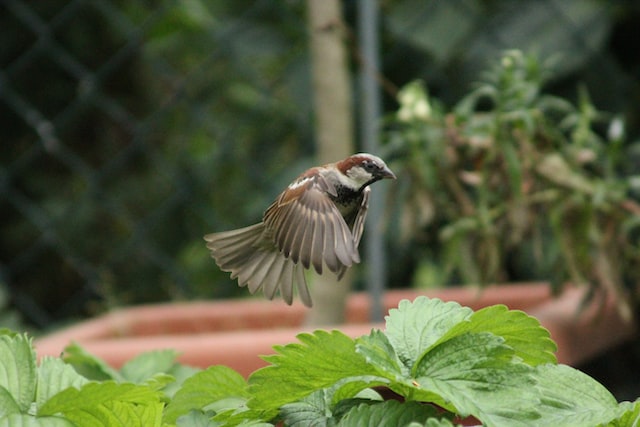
Proper cleanup and maintenance of bird infestations
Make sure you’re regularly cleaning up any bird droppings and nests to prevent further infestations on your balcony.
Bird waste can accumulate quickly, especially if you have a bird feeder on your balcony. Use a broom or a brush to sweep away any droppings or debris.
Scrub the floor and walls with water and vinegar to remove any bird droppings stains. A clean balcony will not only prevent bird infestations, but it will also make your outdoor space more enjoyable.
Apart from balcony cleaning, you should also consider bird proofing your balcony. You can use bird netting to create a barrier around your balcony that will prevent birds from landing on it.
You can also install spikes or a bird repellent gel to keep birds away. These methods are humane and are effective in keeping birds off your balcony.
However, make sure that you follow the instructions carefully and do not harm any birds in the process.
Keeping your balcony clean and bird-free requires consistent effort and maintenance. Make sure you check your balcony regularly for any signs of bird activity.
Clean up any bird waste immediately and take steps to bird proof your balcony. By doing so, you can enjoy your outdoor space without having to worry about bird infestations.
In the next section, we’ll discuss how to keep the area clean and tidy.
Maintaining Cleanliness: An Essential Step in Bird Control
Maintaining a clean outdoor space is like tending to a garden, it requires consistent effort and attention to detail. Balcony cleaning is a crucial step in keeping birds away from your home.
Birds are naturally drawn to places that provide them with easy access to food, water, and shelter. If your balcony is dirty and cluttered, it will become a prime target for birds.
Bird waste can cause damage to your property and create an unsanitary environment. Regular cleaning will help prevent birds from nesting on your balcony.
To keep your balcony clean, start by removing any debris and trash.
Sweep or vacuum the area regularly to remove any fallen seeds or crumbs. If you have plants on your balcony, make sure to keep them trimmed and free of dead leaves and branches.
Bird droppings can be difficult to remove, but it’s important to clean them up as soon as possible. Use a mild detergent and warm water to clean any areas that have been soiled.
In addition to regular cleaning, you can also take steps to prevent birds from causing damage to your balcony. Use bird spikes or netting to keep birds from landing on your balcony railing or roof.
These products are designed to be humane and won’t harm the birds. If you notice any signs of bird damage, such as chewed wires or torn screens, take action immediately.
By keeping your balcony clean and well-maintained, you can create a space that is unappealing to birds and prevent them from nesting on your property.
As important as it is to keep your balcony clean, it’s also essential to remove any bird nests that have already been built.
In the next section, we’ll discuss how to safely and humanely remove bird nests from your balcony.
Nest Removal: A Crucial Measure for Effective Bird Control
You may have noticed that a bird has already built a nest on your balcony, but it’s important to remove it to prevent further damage to your property and to ensure the safety of the birds and yourself.
Birds tend to return to the same nesting spots year after year, so allowing them to nest on your balcony could lead to a long-term problem.
Additionally, bird droppings can be unsanitary and corrosive, causing damage to your balcony surfaces.
Before removing the nest, make sure that it is not currently occupied by birds or eggs. Once you have determined that the nest is empty, put on a pair of gloves and remove it gently.
Dispose of the nest in a sealed plastic bag and throw it away in the trash.
To prevent birds from building nests in the same spot in the future, consider installing balcony netting or other bird deterrents.
If you find that birds are persistent and continue to build nests on your balcony, consider using bird traps. These traps are humane and capture birds without harming them.
Once captured, you can release the birds in a safe and appropriate location. However, trapping birds should always be a last resort, as it is always better to deter them from the area rather than trapping them.
With the nests removed, it’s time to focus on preventing birds from entering your balcony in the future. The next step is to seal off potential entry points, which will be discussed in the following section.
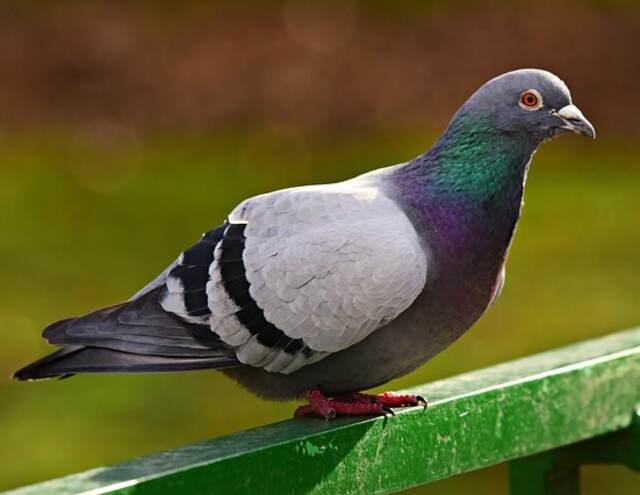
Secure Potential Entry Points to Prevent Access
Sealing off potential entry points on your balcony can be a simple and effective way to prevent unwanted feathered guests from returning, but do you know how to find these entry points without disrupting your balcony’s aesthetic?
Here are four ways to identify potential entry points:
- Check for gaps: Look for tiny gaps or holes in the walls or ceiling of your balcony. Birds can easily slip through these openings and make themselves at home.
- Inspect the corners: Birds love to nest in corners where two walls meet. Check for gaps or cracks in these areas and seal them off with caulk.
- Look at your railing: Birds may perch on your balcony railing before making their way inside. Consider installing balcony netting or bird barrier netting to prevent them from perching.
- Use bird repellent spray: If you suspect that birds are entering through a specific area, consider using bird repellent spray. This will make the area less appealing for birds to perch or nest.
By taking these steps, you can effectively seal off potential entry points and keep birds from nesting on your balcony.
In the next section, we’ll discuss the importance of regular maintenance and cleaning to ensure that your balcony remains bird-free.
Conclusion
To ensure a bird-free balcony, it’s crucial to regularly clean and maintain the space, ensuring that it remains an uninviting environment for avian visitors. In addition, consider installing balcony bird control measures, such as bird barrier netting or bird gel.
These products are specifically designed to deter birds from landing or nesting on your balcony. Bird barrier netting is a popular choice for those looking for a more permanent solution.
The netting can be installed around the perimeter of your balcony, creating a physical barrier that prevents birds from entering the space.
It’s important to note that netting needs to be properly installed to be effective, so it may be worth consulting with a professional to ensure it’s done correctly.
Alternatively, bird gel can be applied to surfaces where birds tend to land. The gel creates a sticky surface that birds find uncomfortable to perch on, effectively deterring them from using your balcony as a landing spot.
While gel can be effective, it may need to be reapplied regularly, especially in areas with heavy rain or wind.
By taking these steps and investing in the right products, you can keep birds off your balcony and enjoy a peaceful outdoor space.
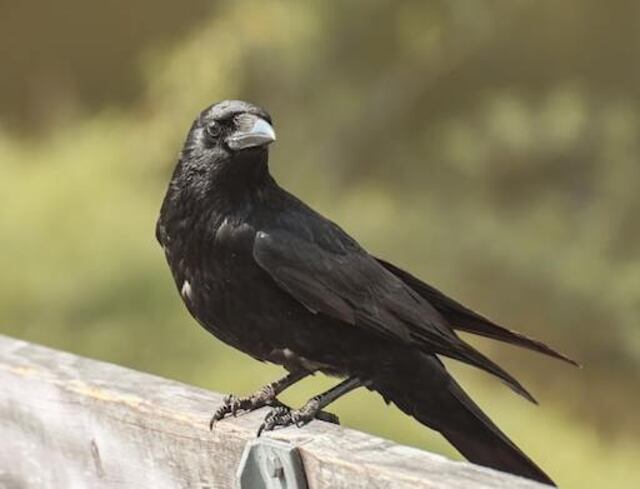
Frequently Asked Questions
What types of birds are the most common problem on balconies?
When it comes to having a balcony, birds can often be a nuisance. Certain types of birds can cause damage to property or just simply create a mess. The most common birds that can be problematic on balconies include pigeons, seagulls, and sparrows.
Pigeons are known to roost and nest in small spaces, while seagulls can be aggressive and territorial. Sparrows, on the other hand, are known for their droppings and can attract other birds to the balcony.
Knowing which birds are most likely to cause problems can help you take preventative measures to keep them away.
Do bird deterrent products harm birds in any way?
You might be wondering if bird deterrent products are harmful to birds. The good news is that many of these products are designed to be humane and safe for birds.
For example, bird spikes are often made from materials that won’t harm birds, such as plastic or stainless steel. Similarly, bird netting is typically made from soft and flexible materials that won’t cause injury to birds.
So, if you’re worried about causing harm to birds while trying to keep them off your balcony, rest assured that there are many safe and effective options available.
Can using visual and audio deterrents be effective in the long term?
Using visual and audio deterrents can be effective in the long term if used correctly. However, it’s important to note that birds can become habituated to these types of deterrents over time.
To prevent this, it’s recommended that you rotate the types of deterrents you use and move them around periodically to keep birds on their toes.
Additionally, it’s important to make sure the deterrents you use are appropriate for the types of birds you’re trying to keep away, as some species may not be affected by certain types of visual or audio cues.
What are some natural methods to keep birds away that won’t harm the environment?
Looking for natural ways to keep birds away without causing harm to the environment? You’re not alone.
Many people seek to keep birds away without resorting to harsh chemicals or physical barriers. Luckily, there are a few simple and effective natural methods you can try.
For example, you might consider using reflective surfaces or bird decoys to deter birds from approaching your balcony.
Alternatively, you could plant certain types of vegetation that birds don’t like or use essential oils with strong scents that birds find unpleasant.
With a little experimentation, you’re sure to find a natural method that works best for you.
How can I tell if there is a bird infestation on my balcony?
To determine if you have a bird infestation on your balcony, there are a few signs to look out for.
First, check for any nests or bird droppings on your balcony.
Additionally, listen for excessive bird chirping or singing, especially during mating season.
If you see multiple birds on your balcony at once or notice damage to any plants or furniture, this could also indicate an infestation.
It’s important to address a bird infestation as soon as possible to avoid any damage or health risks.
Conclusion
So, there you have it! With these tips, you can now enjoy your balcony without any unwanted bird visitors.
Remember to choose the right bird deterrent product for your needs, whether it’s visual or audio, and to keep the area clean and free of any potential nesting sites.
With a little effort, you can create a bird-free oasis and enjoy your outdoor space to the fullest.
In the end, keeping birds away from your balcony is like warding off unwanted guests from your home.
With the right tools and strategies, you can create a welcoming and peaceful environment that’s free from the distractions and disturbances of our feathered friends.
So, go ahead and take action to keep those birds at bay, and enjoy your balcony retreat in peace and tranquility.


